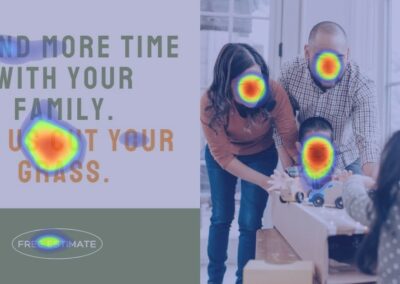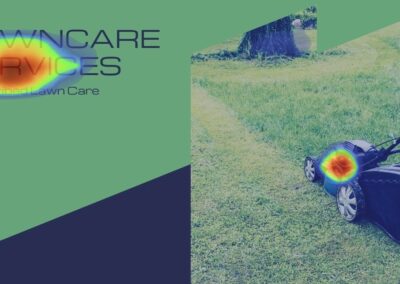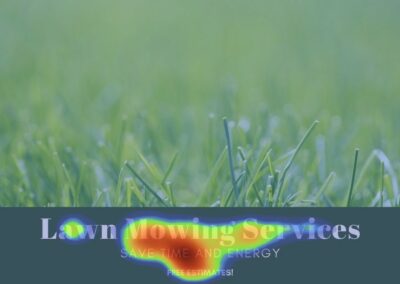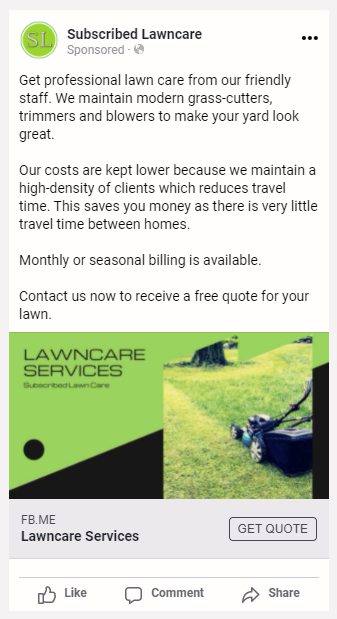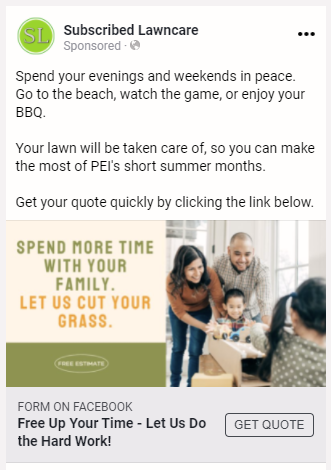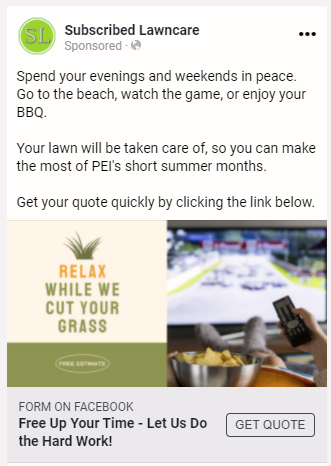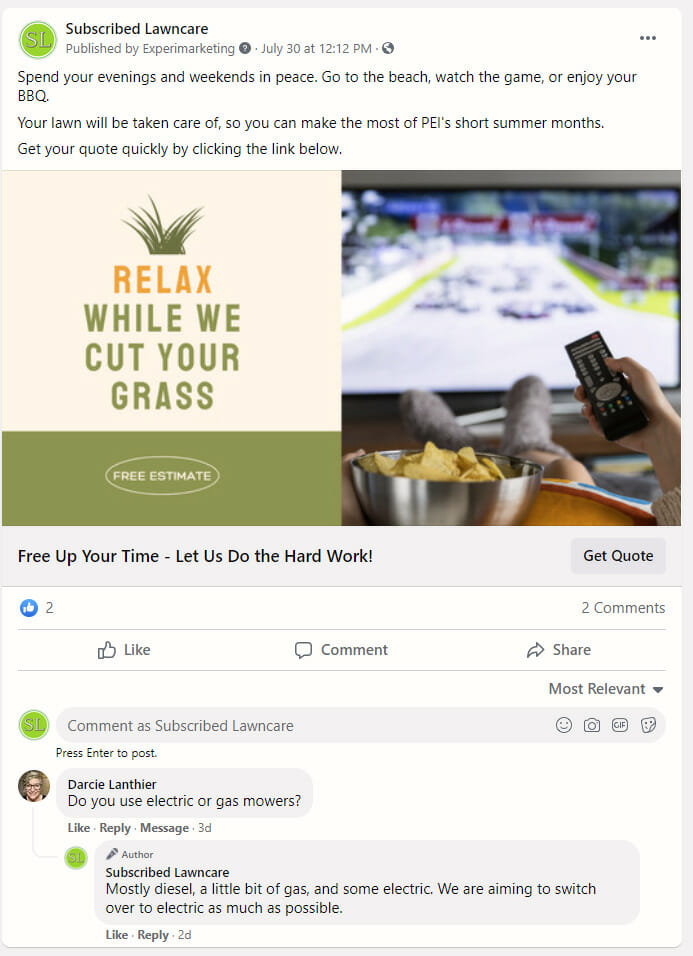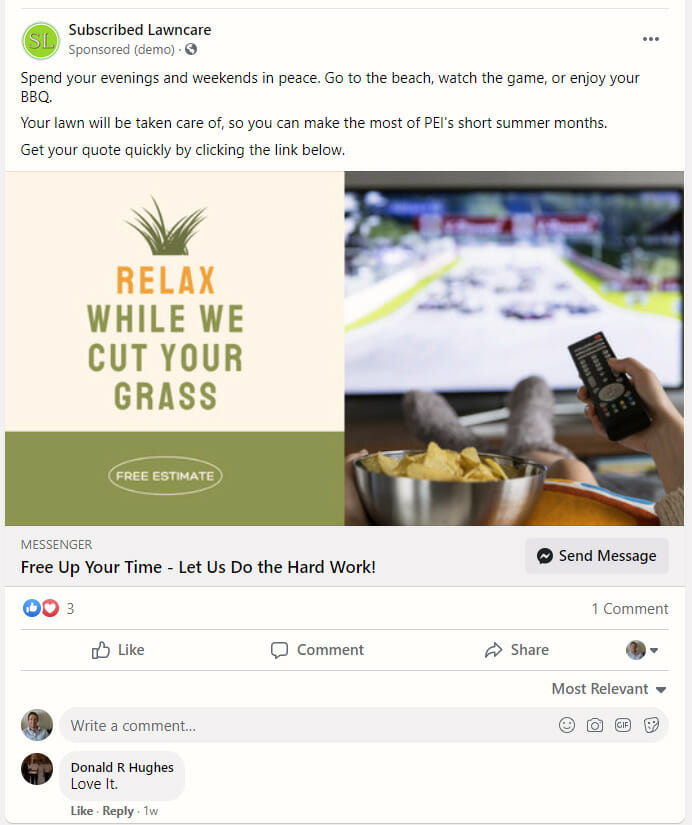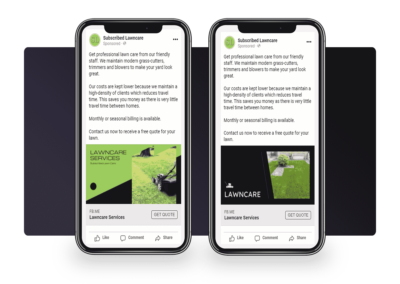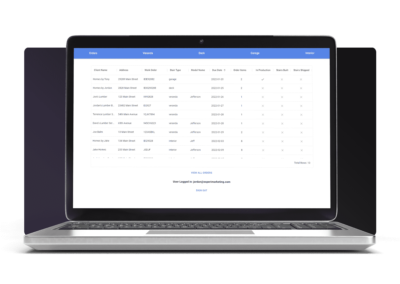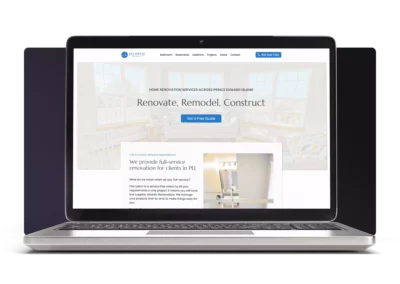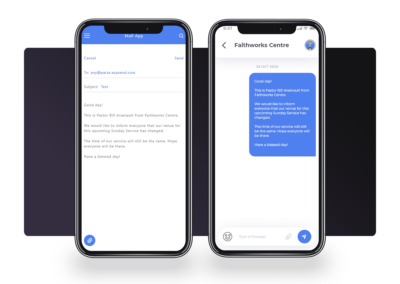Case Study for Subscribed Lawn care
Advertising Ads
We created Facebook Ad campaigns get some useful information about what the company’s next goals.
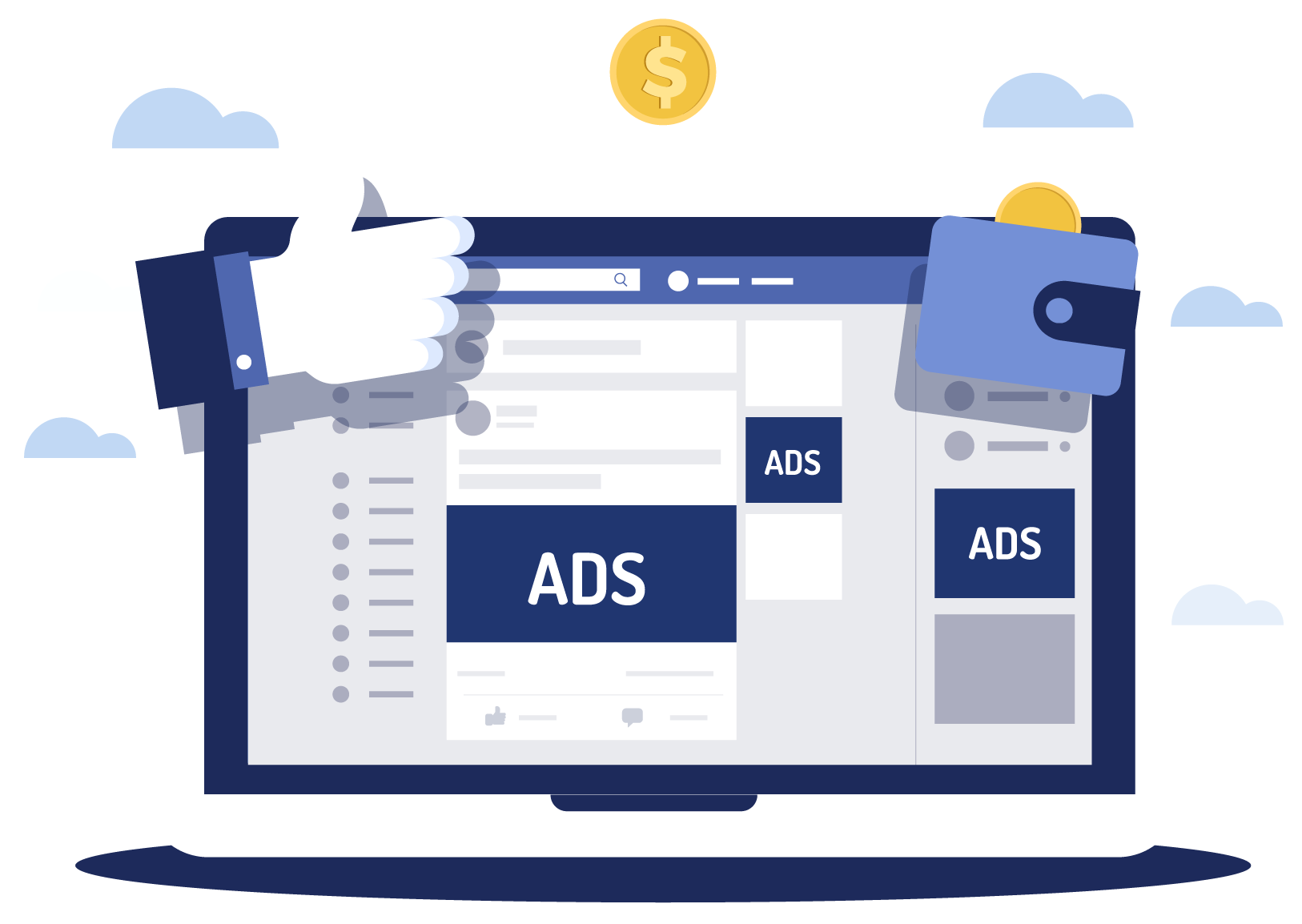
ABOUT THE CASE STUDY
Project Overview
Summary
This is an advertising experiment we ran for a company called Subscribed Lawn Care.
The owners had just purchased the company 3 months before. So, the new owners were still figuring out a lot of things.
For example, whether there was a high demand for lawn cutting. Or if all the hiring happens at the start of the season.
The company had 325 active customers when they bought it. Midway through the first cutting season, the owners discovered a problem.
Problem to be Solved
The company wasn’t as profitable as they had been led to believe. In fact, it wasn’t generating any profits.
So, it was critical that they make some decisions before the next cutting season.
For one, they knew they would have to bump their prices higher for next season. That was a certainty.
A second decision was whether they should expand or not. A couple clients had mentioned how hard it was to find someone to cut their grass. Because all the other grass cutting companies were operating at capacity.
So, the owners thought that if unfulfilled demand existed, it might be worth expanding for next season. The company already had 9 staff and 4 vehicles. Growth would mean 6 more employees and 3 more vehicles.
Since this would almost double the company size, it would require a lot of capital.
The question was:
“Would they be able to find enough clients?”
In the spring, they planned to run Facebook ads to bring in clients. But, by that time, they would have already had to buy more vehicles and hire more staff. So, the level of risk would be high.
To mitigate the risk, they approached Experimarketing. We suggested that they do some Facebook testing now. That would give them some data to help make their decision.
They could run their “spring ads” now to see if there was enough demand for lawn care. If they got customers at a reasonable price, they could make the investments. If not, then they will have saved themselves from a huge loss in the spring.
In the client’s words:
“I was trying to figure out what demand actually is in the marketplace. It is a tricky thing to put your finger on because it is very seasonal.
And it is hard to tell because everyone wants their grass cut at once. So, we don’t know if there is a huge demand or if the demand gets filled at a certain point or how that works.“
The only issue was I was trying to decide if we should expand the business next year or solidify it.”
EXPERIMENTS AND ADS CREATED
BUDGET & CAMPAIGN
To make a simple test, they decided on an advertising budget of $500.
We wanted to find whether there was demand, so we planned a simple strategy.
First, we didn’t want the Facebook campaign type to be a failure point in the system. To prevent this, we would test two different campaign types.
That way if one of them didn’t work, the other still had a chance to work. It would give us a higher percentage chance of finding whether there was demand.
So, the two campaign types were:
Lead campaign and Messenger campaign.
A Lead campaign has a form on Facebook which clients fill out. A Messenger campaign starts a conversation with the client on messenger.
The second part of the strategy was the way we approach the ad copy. We would try two different approaches with our ad copy, for the same reason. It spreads out our risk, and makes it more likely we will find whether there is demand.
For the ad copy, we decided to test out a direct ad and an appeal-based ad.
The direct ad would use copy taken from the client’s website. The appeal-based ad would focus on the benefits of having your lawn done for you.
On the technical end, we would also be setting up targeting criteria and applying some AI tests. The AI tests mimic eye tracking technology. This will tell us what elements are most likely to receive the most attention and how clear the presentation is.
Geographical targeting was set up, as the client prefers clustered clients. This reduces travel time and increases profitability.
Attention Analytics
In the images, you can see the ad images with the AI overlays. The areas with the deeper red are attracting the most attention. You can see the path the eye is most likely to take when looking at an image.
The software also considers how clear the information is presented and how difficult it is to understand at a glance.
Direct Ads
The final direct ads chosen were these two versions.
After the client saw this version (Direct Ad 1.0), they wanted to remove the middle two paragraphs.
So, the final direct ads chosen were these two versions.
Appeal-based Ads
And for the appeal-based ads, we ran these two versions. The copy is the same for the text part, but the image text and image are different.
This ad copy was done more in a copywritten style. While the direct ad was mostly taken from the copy on their website, this copy was more creative.
The client’s comments about the appeal-based ads we created:
“I like that these ads focus on value. It is explaining the value to the customer. Not just focused on us. A lot of ads are targeted toward explaining the company. Where good marketing is explaining how a customer is going to be able to sit back and have a beer. That is what you are buying – that freedom. And those are the customers we want too. Not the person who is in love with their lawn and cares about every blade of grass. Not the perfection-focused person. We want the average client who wants their lawn cut well.”
After seeing the appeal-based ads, the client felt like the direct approach probably wasn’t as strong. But we wanted to test it to find out.
For our campaign structure, we set up two different campaigns. One for the lead ads and one for the messaging ads. Each campaign had a $35 daily budget.
Inside each campaign, we set up two different ad sets. One for the “direct ads” and the other for the “appeal ads”. And so, each ad set had a $17.50 daily spend.
While setting up the ads, we had to create and add a privacy policy to Subscribe’s website so the ads complied with Facebook’s terms of service.
Here is the targeting that was used for all the ad sets. You can see the geographic regions targeted, the age range, and the placements. Because this ad was run outside of the USA, we could not target home owners directly.
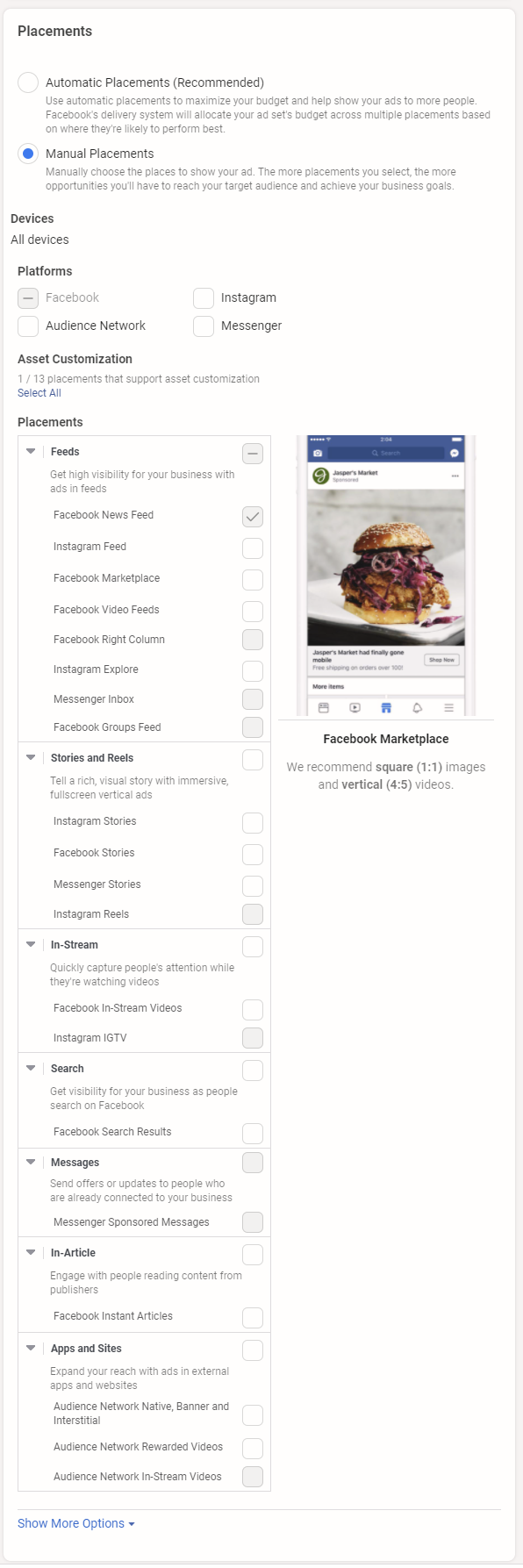
Results
Challenges
After running the ads for 7 days, the messaging campaign brought in 11 messaging conversations. The lead campaign didn’t bring in any leads. The budget was spent equally at $250 per campaign.
Here is a screenshot:
Campaign:
Ad Set:
Ad:
The lowest cost per lead with these test ads was $16.12. That was for the appeal-based messaging ad with a focus on relaxation.
Campaign results broken down by gender:
Appeal Ads results:
Direct Ads results:
The appeal-based ads brought in a statistically significant 41.71% increase in ad clicks than the direct ads. (Appeal-based Ads Results 1.0).
Although there were more link clicks and more messaging conversations started with the appeal-based ads, the increase did not reach statistical significance. We would need to run the ads longer to reach statistical significance in those areas.
Appeal ads social results:
Direct Ads Social Results:
If we look at the difference in social responses vs reach, there is a statistically significant difference between the direct ads and the appeal-based ads (next image). The appeal-based ads brought in 243.92% more social engagement.
Particularly, all of this engagement came in from the ads with the image that talked about relaxing while Subscribed Lawn Care does the work. The ad with the family-based image did not bring in social engagement.
This suggests that a potential branding strategy would be to appeal to comfort and ease.
Customer Engagement
So, after running this test for 7 days, 10 conversations were started. One was for someone who wanted to hire the company. Here is how the conversation went:
The remaining 9 responses were from people who, it appears, weren’t expecting to instantly start a conversation with the page.
With a messaging conversation, when you click on the “Send Message” button, it starts a conversation. Some people were surprised by this. Here are the conversations for each:
There were also a couple comments on the ads. One was asking whether the company used electric or gas mowers. And the other was a comment that they loved the post.
Conclusion
Client’s Comments
“Although there were more link clicks and more messaging conversations started with the appeal-based ads, the increase did not reach statistical significance. We would need to run the ads longer to reach statistical significance in those areas.
Maybe the 30-40 range is where you want to advertise, because they are most likely buying their first home. Whereas someone who is age 45+ might be price shopping. That might be a consideration as well. I think there is probably good data to glean from that, how to market.
The appeal (comfort and ease) may be a beneficial branding approach.
This also gives me some clarity on what we may need to do in the spring. I would say we should do Google ads in the spring. Especially if we have Google My Business set up too. Early advertising could also be good. And advertising to our existing list of customers.”
How does the branding idea of comfort and ease fit or not?
“This fits with us. I don’t want to be in the premium lawn care market. You probably have to charge 2x as much. It is so hard not to make any mistakes when you do 300+ lawns a week. A tire is going to go off the edge into the flower bed sometimes. You are operating machines around objects. We want customers like myself – who just care if their lawn is cut regularly.”
As a result of this work, what was the outcome?
“That I had a better handle on demand. That demand is very much within a 2-month window. And that is where we need to focus all of our advertising. That demand wasn’t such that at this point people hadn’t figured out what to do with their grass. At this point the market is serviced by one means or another.”
How has this result impacted your business?
“It has been a good education on advertising on Facebook. It also made me want to do more advertising. And to show me that it is accessible.”
Is there anything else you would like to share?
“I think it is good to go through the exercise of going through the marketing and thinking about your client. And coming up with a plan for your marketing and advertising.
It is valuable to be able to talk to you, who is an expert in that kind of stuff, to see if those ideas have any traction.
Also, it is interesting just seeing how much work running ads would be. To figure out what works. And how much cost you would have to pour into it. How you would have to be strategic to gain any sort of alpha. But if you did figure it out, you could really dial in your customer.
It also makes me think about how exposed you are to online things. How exposed you are to potential complaints as well.”
What did you think of this final report?
“I like the report, and that it has a lot of detail. It is interesting to see the process of the report, even my comments. Because it kept the thread through all the experiment. Because I am not engaged in the test full time, it helps me to remember all the details and follow through on my own thought process. Because you kind of forget all the little decisions you made along the way.“
Jordan’s Comments
“I really like this experiment because it proved something for the client. In particular, that it wasn’t going to be as easy as they thought it might be to bring in new clients. This is hugely valuable information because it allows them to plan successfully.
It also points them in the right direction. For instance, Google Ads may be a better advertising medium. Particularly the search ads. But those will be focused around the time clients are signing up at the start of the season.
I wouldn’t rule Facebook ads out either. But I would consider that the company is likely not going to bring in an avalanche of new customers quickly through Facebook ads. And the advertising money should be spent before and during the time when clients start to sign up for grass cutting services.
I would also suggest considering focusing on comfort and ease for a branding strategy. At this point, we don’t have enough data to know whether another method may work better. But we do know there is some interest in the market for that approach.
The idea to focus on comfort and ease could be useful to the client in planning their website redesign in the future as well. They may want to focus on those aspects with their copy and imagery.”

Let's discuss your ideas
REquest a quote
Tell us about your project idea. We will help you to implement a technical solution to improve your business. Just drop us a line!

